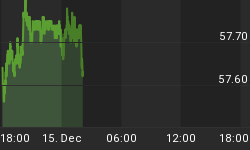Last Friday we released a short note claiming that investors were more bullish than at any time in the past 15 years. Needless to say, that kind of optimism is rarely rewarded and we are therefore extremely skeptical of this latest rally.
Our study overlaid both the S&P 500 and the 30-year bond divided by the Vix to show that when these ratios have peaked together, as they are now doing, both the stock market and bond market have gone down together, which is quite a rare event.
Since we issued that note on Friday the Vix has rallied sharply for two days in a row despite what is perceived to be the beginning stages of a long overdue rally. As such, the stock/Vix ratio has turned down, indicating a possible top in the market.
Certainly, this equity rally has provided plenty of technical contradictions, but this increasingly looks to be the final third leg of a rally, which is speculative in nature rather than based on a true comparative advantage over other asset classes.

Now consider that each time over the past year that the S&P 500/ Vix ratio has risen above 80, the stock market declined an average of 7%. Moreover, the ratio's October 1 high of 87.50 matched the peak seen in August 2000, which was when the stock averages first began their bear market in earnest.
Also consider that there were only two other times in the past 15 years that the Bond/Vix ratio was this high (September 1993 and December 1995). The average decline in the 30-year bond from peak to trough was 19%.
Therefore, it is with opportune deliberation that I point out that these two ratios for the first time ever have retested their all time peaks together and begun to turn down. My view is that it's not a question of whether the bond market or stock market is correct. Instead we should ask if the bond market and stock market are not both mistaken. The implication, of course is that investors have never been more wrong about the state of the economy, inflation expectations, or some combination thereof.

**Intuitively, a high Bond/Vix ratio implies a strong economy and low inflation - investor nirvana. If bond prices were high due to fear of economic weakness, stocks would likely be lower and thus the Vix higher. In this case, economic weakness would not drive this ratio as high as when the economy was perceived as healthy with low inflation.















